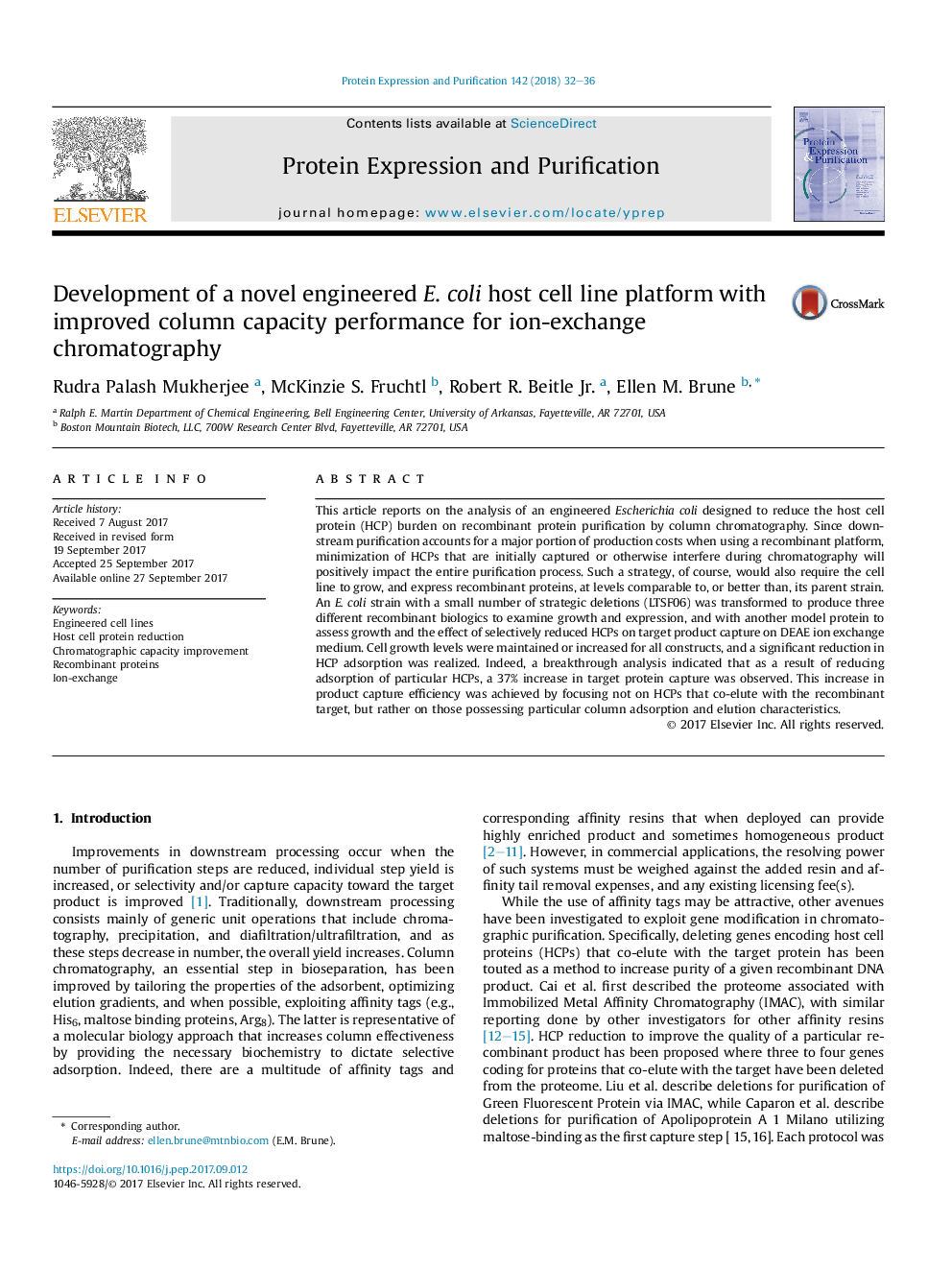| کد مقاله | کد نشریه | سال انتشار | مقاله انگلیسی | نسخه تمام متن |
|---|---|---|---|---|
| 5515956 | 1542299 | 2018 | 5 صفحه PDF | دانلود رایگان |
کلمات کلیدی
1. مقدمه
2. مواد و روش ها
2.1 وکتورها و محیط ها
2.2. کشت سلولی
2.3 آماده سازی لیزات
2.4 ظرفیت ستون
2.5. آنالیتیکال (تجزیه ای)
3. نتایج و بحث
3.1 ویژگی های تغذیه ی پیمانه ای و بیان با LTSF06 یک خط سلولی مهندسی شده ی E. coli است
شکل 1: فرایندهای تخمیر تغذیه ی پیمانه ای به وسیله جذب در 600 نانومتر بررسی شده است، 'F' نشان می دهد که در آن خوراک آغاز شد و 'I' نشان می دهد که در آن ساخت، رخ داده است.
شکل 2. بهبود در ظرفیت ستون با استفاده از AFP-GFPUV به عنوان یک پروتئین مدل نشان داده شده است. وقتی که مقدار کل پروتئین ها به ستون بارگذاری شد، . بهبودی مداوم 38% در کارایی و بازده ی جذب مشاهده شد.
4. نتیجه گیری
- Antimicrobial peptide fused to GFPuv expressed using engineered cell line.
- Engineered cell line has comparable growth characteristics during fed batch fermentation.
- DEAE column capacity increased by 38% when compared to wild type cell line as a result of deletion of 6 genes.
This article reports on the analysis of an engineered Escherichia coli designed to reduce the host cell protein (HCP) burden on recombinant protein purification by column chromatography. Since downstream purification accounts for a major portion of production costs when using a recombinant platform, minimization of HCPs that are initially captured or otherwise interfere during chromatography will positively impact the entire purification process. Such a strategy, of course, would also require the cell line to grow, and express recombinant proteins, at levels comparable to, or better than, its parent strain. An E. coli strain with a small number of strategic deletions (LTSF06) was transformed to produce three different recombinant biologics to examine growth and expression, and with another model protein to assess growth and the effect of selectively reduced HCPs on target product capture on DEAE ion exchange medium. Cell growth levels were maintained or increased for all constructs, and a significant reduction in HCP adsorption was realized. Indeed, a breakthrough analysis indicated that as a result of reducing adsorption of particular HCPs, a 37% increase in target protein capture was observed. This increase in product capture efficiency was achieved by focusing not on HCPs that co-elute with the recombinant target, but rather on those possessing particular column adsorption and elution characteristics.
Journal: Protein Expression and Purification - Volume 142, February 2018, Pages 32-36
